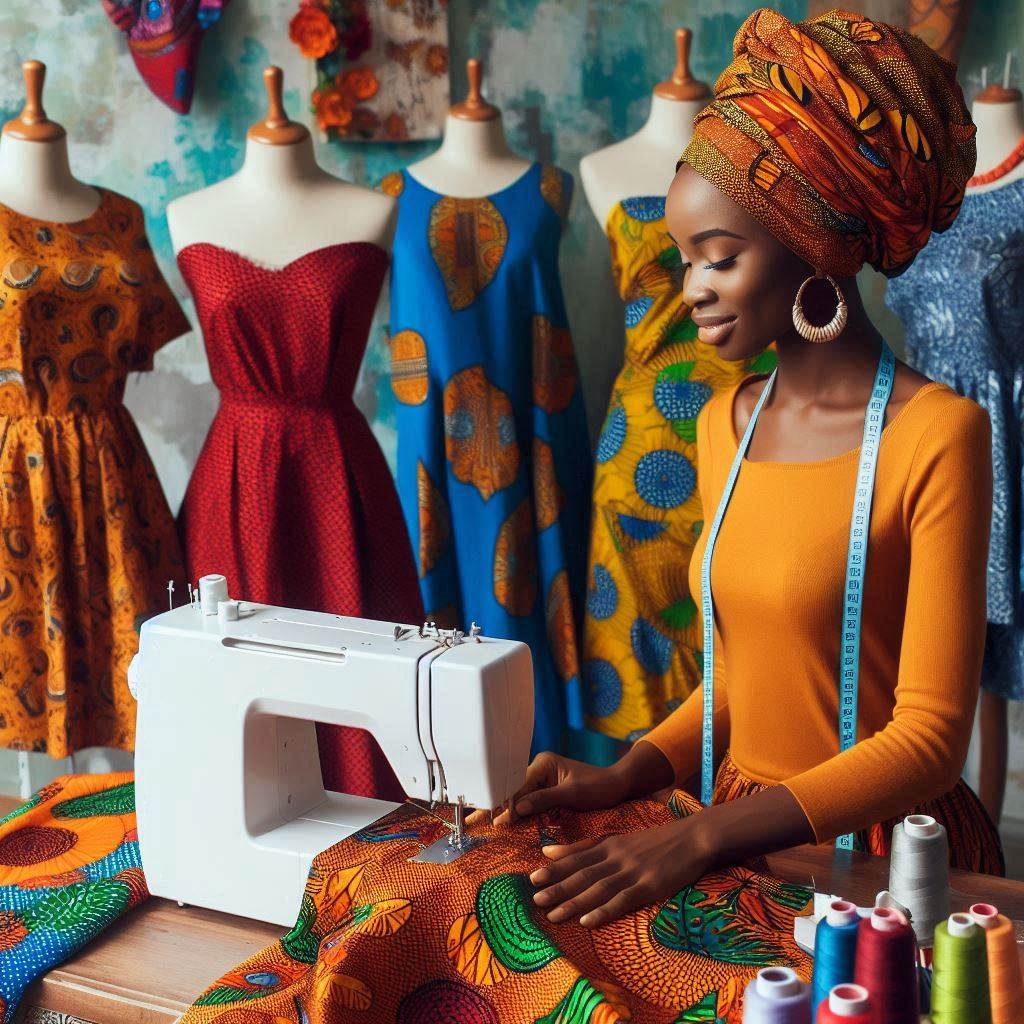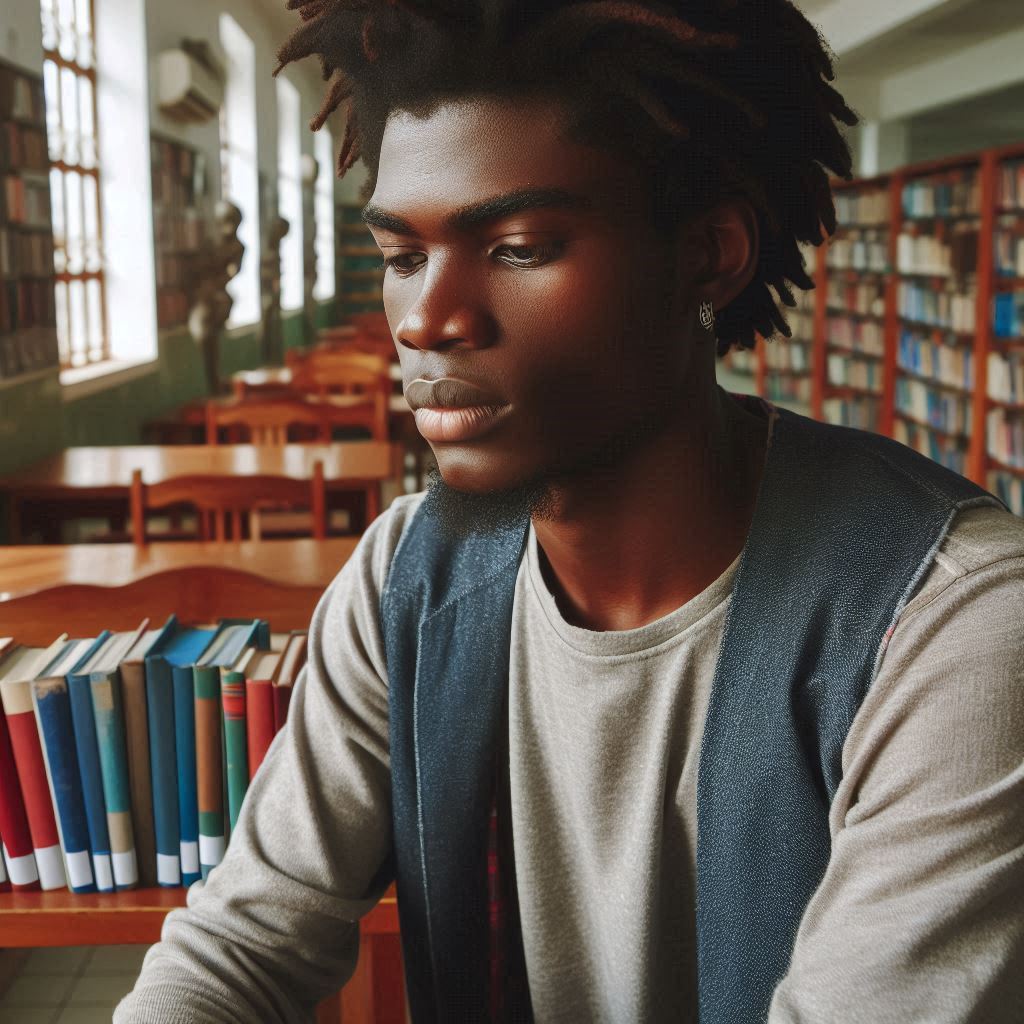Introduction
Nigerian fashion showcases a vibrant tapestry of traditional and contemporary styles.
Understanding its evolution provides insight into Nigeria’s rich cultural heritage and dynamic modern identity.
Historically, Nigerian fashion was deeply rooted in ethnic traditions, with each region showcasing unique textiles and designs.
Traditional attire, like the Yoruba’s Aso-Oke, the Igbo’s George wrapper, and the Hausa’s Babban Riga, reflects diverse cultural identities.
These garments are not just clothing but also symbols of cultural pride and social status.
Over time, Nigerian fashion has embraced global influences while retaining its traditional essence.
This fusion has led to the rise of innovative designers blending local fabrics with modern aesthetics.
In the mid-20th century, Nigerian fashion began to gain international recognition.
Designers like Deola Sagoe and Folake Coker pioneered contemporary African fashion, incorporating traditional elements into haute couture.
Their work has been celebrated on global runways, bringing Nigerian fashion to the forefront of the industry.
Recognizing the evolution of Nigerian fashion highlights the importance of preserving cultural heritage while encouraging creative innovation..
Early influences on Nigerian fashion
Nigerian fashion’s roots run deep, shaped by the country’s diverse ethnic groups.
Each group brought unique styles and textiles.
Traditional Nigerian fashion reflected the local environment, cultural values, and social structures.
Early Nigerian fashion included intricate beadwork, handwoven fabrics, and elaborate headpieces.
Nigerian fashion also incorporated symbols and patterns representing cultural beliefs and social status.
Traditional attire varied significantly across regions, showcasing the richness of Nigeria’s cultural tapestry.
Traditional Clothing and Textiles
Nigerian textiles have always played a crucial role in fashion.
Aso-Oke, a Yoruba handwoven cloth, is known for its rich colors and patterns.
The Igbo people’s George wrapper is another iconic textile, celebrated for its elegance and versatility.
The Hausa’s Babban Riga, a flowing robe, represents northern Nigeria’s distinctive style.
Traditional clothing often included accessories like beads, cowrie shells, and leather, enhancing their visual appeal.
Festivities and ceremonies saw Nigerians donning their most elaborate attire, reflecting their cultural pride.
Colonial Influence
Colonial rule introduced significant changes to Nigerian fashion.
European clothing styles began to influence local dress.
Nigerians started incorporating Western garments into their wardrobes, blending them with traditional attire.
The colonial period also saw the introduction of new fabrics like cotton and silk.
European missionaries and administrators promoted Western dress codes, especially in educational institutions.
However, Nigerians resisted full assimilation, maintaining their traditional styles.
Post-independence, there was a resurgence of interest in traditional Nigerian fashion, symbolizing national pride and identity.
Global Fashion Trends
Globalization has significantly impacted Nigerian fashion, bringing international trends to local designers and consumers.
Nigerian designers began blending global trends with traditional elements, creating unique fashion statements.
The 1960s and 1970s saw Nigerian fashion icons like Chief Nike Davies-Okundaye gaining international recognition.
The rise of Nigerian music and film industries further propelled local fashion onto the global stage.
Social media and digital platforms have also played a crucial role in promoting Nigerian fashion worldwide.
Today, Nigerian fashion designers showcase their work at international fashion weeks and on global runways.
Read: Student Experiences: Life in Communication Arts
1960s-1970s: Independence and cultural pride
The 1960s marked Nigeria’s independence from British colonial rule.
This newfound freedom ignited a surge of cultural pride.
Nigerians began to assert their identity through fashion.
The post-independence era saw a revival of traditional fabrics and styles.
Nigerians embraced their heritage, blending it with contemporary fashion trends.
Rise of Nigerian Designers
During the 1960s and 1970s, talented Nigerian designers began to emerge.
These designers played a crucial role in shaping the country’s fashion landscape.
They celebrated indigenous aesthetics, integrating them into modern designs.
Designers like Folashade Thomas-Fahm gained recognition for their innovative use of traditional fabrics.
Thomas-Fahm, often called the “first lady of Nigerian fashion,” revolutionized local fashion.
She combined Western tailoring techniques with traditional Nigerian textiles, creating unique pieces.
Incorporation of Traditional Fabrics and Styles
Nigerian designers started incorporating traditional fabrics like Aso-Oke, Adire, and Ankara into their collections.
These textiles became symbols of cultural pride and resistance.
Designers experimented with traditional dyeing techniques, weaving patterns, and embroidery.
The result was a vibrant fusion of old and new, reflecting Nigeria’s rich heritage.
Traditional garments like the Buba, Iro, and Gele gained popularity in contemporary fashion.
This period saw the rise of Afrocentric fashion, which celebrated African roots.
Influence of Political and Cultural Events
Political and cultural events of the 1960s and 1970s significantly influenced Nigerian fashion.
The civil rights movement in the United States inspired Nigerians to embrace their African identity.
Music, literature, and art from the era also promoted Afrocentric fashion.
Musicians like Fela Kuti used their platforms to advocate for cultural pride.
Kuti’s Afrobeat music, with its vibrant costumes, became synonymous with Nigerian fashion.
Cultural festivals and events further showcased traditional attire and indigenous craftsmanship.
Fashion as a Statement of Identity
Fashion during this period became a powerful statement of identity and resistance.
Nigerians used fashion to challenge colonial legacies and assert their independence.
The blend of traditional and modern elements in fashion symbolized a new national identity.
The government also supported initiatives that promoted Nigerian textiles and designers.
Fashion shows and exhibitions became popular, celebrating the country’s cultural heritage.
Nigerian fashion began to gain international attention, with designers showcasing abroad.
Read: Communication Arts: Balancing Theory and Practice
1980s-1990s: Westernization and globalization
The 1980s and 1990s marked a significant period of Westernization and globalization in Nigerian fashion.
Western fashion trends began to influence Nigerian designers and consumers.
The influx of Western media, music, and films introduced new styles and aesthetics.
Nigerians became increasingly exposed to global fashion trends, leading to a fusion of styles.
Influence of Western Fashion Trends
Western fashion trends heavily influenced Nigerian fashion during this period.
The bold and extravagant styles of the 1980s made a significant impact.
Shoulder pads, sequins, and bold colors became popular in Nigerian fashion.
The music and film industries also played a crucial role in shaping fashion trends.
International pop stars and Hollywood icons set style benchmarks that many Nigerians aspired to emulate.
Local designers began incorporating these elements into their collections, creating a unique blend of Western and Nigerian styles.
Popularity of Designer Labels
The popularity of designer labels soared during the 1980s and 1990s in Nigeria.
International brands such as Gucci, Versace, and Chanel became highly coveted.
Affluent Nigerians showcased their status and fashion-forwardness through these luxury brands.
The desire for designer labels was fueled by the growing middle class and increased disposable income.
Boutiques and high-end stores emerged in major cities, catering to the demand for luxury fashion.
This period saw the rise of fashion-conscious Nigerians who embraced global trends.
Shift Towards Modern and Eclectic Styles
There was a noticeable shift towards modern and eclectic styles in Nigerian fashion.
Traditional attire remained important, but contemporary designs gained prominence.
Nigerian designers started experimenting with diverse fabrics, cuts, and patterns.
They combined traditional textiles with modern silhouettes, creating innovative and eclectic designs.
The fashion scene became more vibrant, reflecting the dynamic and evolving cultural landscape.
Young designers emerged, bringing fresh perspectives and pushing boundaries.
The Role of Media and Entertainment
Media and entertainment significantly influenced Nigerian fashion in the 1980s and 1990s.
Television shows, magazines, and music videos showcased the latest fashion trends.
Nigerian celebrities and influencers became style icons, shaping public perception of fashion.
Music genres like Afrobeat and hip-hop influenced fashion choices and styles.
Fashion shows and events became popular, providing platforms for designers to showcase their work.
Read: How to Apply for Communication Arts Programs

2000s-present: Revival of Nigerian fashion
The 2000s ushered in a remarkable revival of Nigerian fashion.
Nigerian designers started gaining international recognition, showcasing their creativity on global platforms.
The fashion scene became vibrant, dynamic, and influential.
The revival of Nigerian fashion marked a period of cultural pride and artistic expression.
Rise of Homegrown Designers
The rise of homegrown designers has been a key feature of this revival.
Designers like Deola Sagoe, Tiffany Amber, and Maki Oh gained prominence.
They brought fresh perspectives, blending traditional elements with modern aesthetics.
Their innovative designs attracted both local and international attention.
Homegrown designers have played a crucial role in redefining Nigerian fashion, setting new trends, and inspiring the next generation of fashion enthusiasts.
Promotion of Nigerian Fabrics like Ankara
The promotion of Nigerian fabrics, especially Ankara, has been significant in this revival.
Ankara, with its vibrant patterns and bold colors, became a symbol of Nigerian fashion.
Designers incorporated Ankara into contemporary designs, making it fashionable and trendy.
The use of Ankara extended beyond clothing to accessories, home décor, and footwear.
This celebration of local fabrics fostered a sense of cultural identity and pride.
International Recognition and Fashion Shows
Nigerian fashion gained international recognition through participation in prestigious fashion shows.
Designers showcased their collections at New York Fashion Week, Paris Fashion Week, and London Fashion Week.
This global exposure brought Nigerian fashion to the forefront, attracting a diverse audience.
International celebrities and influencers started wearing Nigerian designs, further boosting their popularity.
Nigerian fashion shows, like Lagos Fashion Week, became major events, highlighting the country’s rich fashion heritage.
The Role of Media and Social Media
Media and social media played a crucial role in the revival of Nigerian fashion.
Fashion magazines, blogs, and influencers promoted Nigerian designers and their creations.
Social media platforms like Instagram became essential for showcasing designs, reaching a global audience.
The digital age enabled designers to connect with fashion enthusiasts worldwide, fostering a vibrant online fashion community.
The Influence of Afrobeat and Pop Culture
The influence of Afrobeat and pop culture has significantly shaped Nigerian fashion.
Musicians and artists embraced bold and unique fashion styles, setting trends.
Their influence extended beyond music to fashion, inspiring fans and fashion lovers.
Afrobeat icons like Wizkid and Burna Boy became style icons, promoting Nigerian fashion on international stages.
Read: Introduction to African and Asian Studies in Nigeria
Cultural impact of Nigerian fashion
Nigerian fashion has played a significant role in showcasing the rich cultural heritage of the country.
The vibrant colors, intricate patterns, and unique styles of Nigerian traditional attire have been a representation of the diverse ethnic groups in the country.
This cultural diversity is reflected in the different traditional fabrics such as Ankara, Aso-oke, and Adire, which are widely used in Nigerian fashion.
Promotion of Nigerian identity
Nigerian fashion has been instrumental in promoting the Nigerian identity both locally and internationally.
Through the use of traditional fabrics and designs, Nigerian fashion designers have been able to showcase the beauty and diversity of Nigerian culture.
This promotion of Nigerian identity has helped to enhance the country’s reputation and recognition on the global fashion scene.
Empowerment of local artisans and designers
The growth of Nigerian fashion industry has provided opportunities for local artisans and designers to showcase their talent and creativity.
By incorporating traditional techniques and craftsmanship into modern designs, Nigerian designers have been able to empower local artisans and preserve traditional skills.
This empowerment has not only created employment opportunities but has also helped in preserving Nigeria’s cultural heritage.
Influence on global fashion trends
Nigerian fashion has had a significant influence on global fashion trends, with many international designers drawing inspiration from Nigerian traditional attire.
The bold colors, intricate patterns, and unique designs of Nigerian fashion have been embraced by fashion enthusiasts around the world.
This influence has led to Nigerian fashion becoming a prominent force in the global fashion industry, contributing to the diversity and richness of fashion worldwide.
In short, the evolution of Nigerian fashion has had a profound cultural impact, promoting Nigerian identity, empowering local artisans and designers, and influencing global fashion trends.
Challenges facing Nigerian fashion industry
Nigeria’s fashion industry has experienced rapid growth and development in recent years, but it still faces several challenges that hinder its full potential. These challenges include:
Lack of infrastructure and support
One of the major obstacles facing the Nigerian fashion industry is the lack of adequate infrastructure and support systems.
Many designers and fashion entrepreneurs struggle to access resources and facilities such as manufacturing equipment, studio spaces, and reliable transportation.
Transform Your Career with Expert Guidance
Get personalized mentorship consulting that’s tailored to your unique path. Our expert advice is actionable and exclusive.
Get StartedWithout proper infrastructure, businesses are unable to scale their operations and meet market demands.
This limits the growth potential of the industry and makes it difficult for designers to compete on a global scale.
Counterfeit products and intellectual property theft
Another challenge facing the Nigerian fashion industry is the prevalence of counterfeit products and intellectual property theft.
Designers often deal with copycats who imitate their designs and sell them at lower prices, resulting in loss of revenue and brand reputation.
Protecting intellectual property rights is essential for the success of fashion businesses, but the lack of effective enforcement mechanisms in Nigeria makes it challenging for designers to safeguard their creations.
This hinders innovation and creativity within the industry.
Need for sustainable and ethical practices
In recent years, there has been a growing demand for sustainable and ethical fashion practices globally.
However, many Nigerian fashion brands still struggle to adopt eco-friendly and socially responsible approaches in their production processes.
From sourcing materials ethically to ensuring fair wages for workers, the Nigerian fashion industry needs to prioritize sustainability and ethical practices to meet the expectations of conscious consumers.
This shift towards sustainability is crucial for the long-term viability of the industry.
Most importantly, while the Nigerian fashion industry has made significant strides in recent years, it still faces various challenges that need to be addressed.
By overcoming obstacles such as lack of infrastructure, counterfeit products, and the adoption of sustainable practices, the industry can continue to thrive and make a mark on the global fashion scene.
Conclusion
Nigerian fashion has undergone a remarkable evolution, reflecting the country’s dynamic culture and history.
Traditional clothing and textiles set the foundation, showcasing rich patterns and vibrant colors.
Colonial influences brought new styles, blending Western fashion with Nigerian aesthetics.
The post-independence era saw a resurgence of cultural pride, with designers incorporating traditional fabrics and styles.
Westernization and globalization in the 1980s and 1990s introduced modern and eclectic trends.
The 2000s marked a revival, with homegrown designers gaining international recognition and promoting Nigerian fabrics like Ankara.
Preserving and promoting Nigerian fashion heritage is crucial.
It maintains cultural identity, fosters national pride, and supports the fashion industry’s growth.
Nigerian fashion continues to inspire globally, blending tradition with innovation.
By celebrating this heritage, we ensure its legacy endures for future generations.
Embracing Nigerian fashion means honoring our past while boldly stepping into the future.




